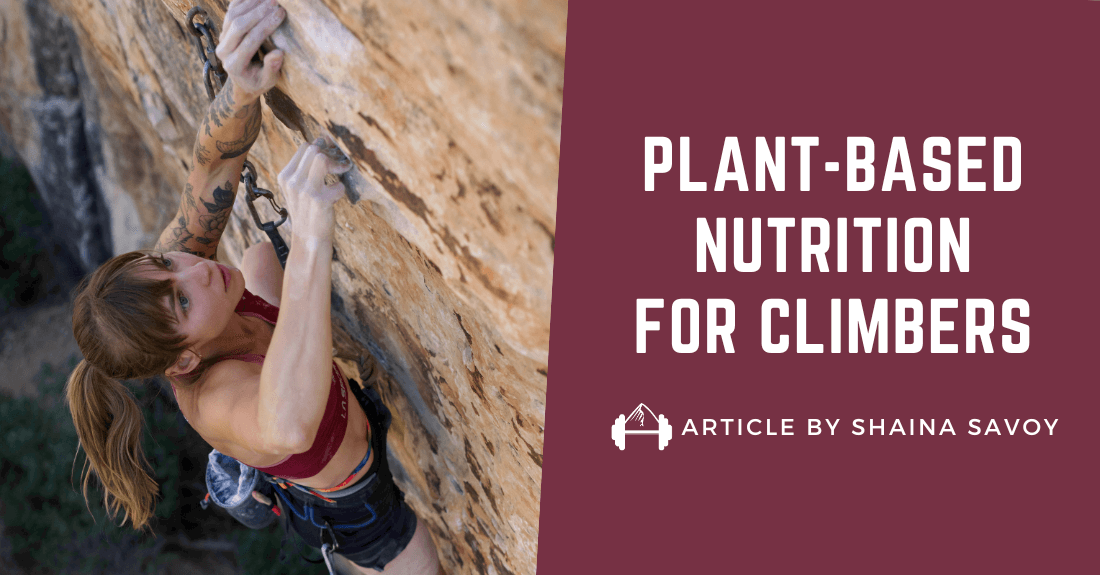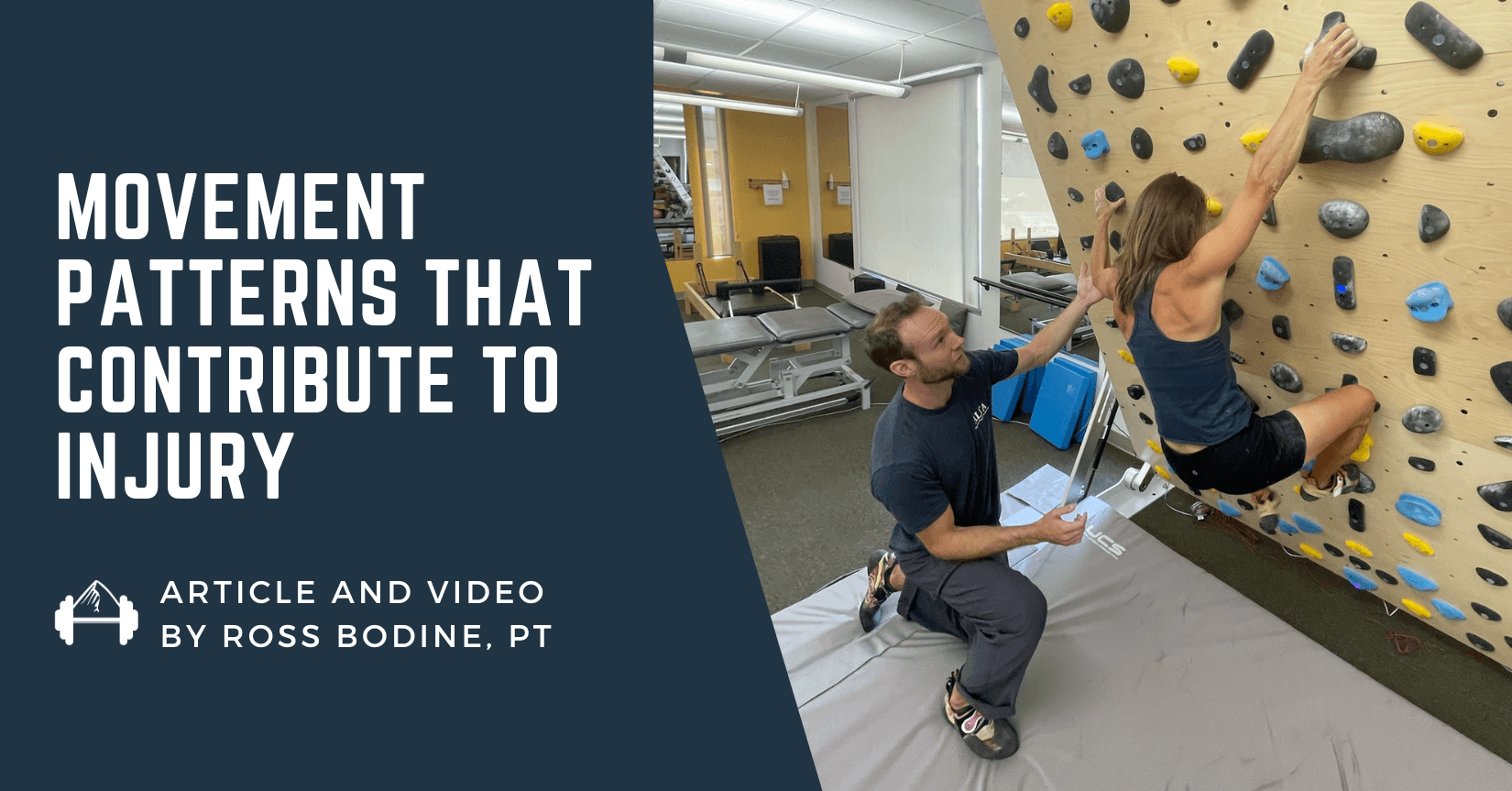Hangboard Workshop January 11th, 2022
Just a little announcement for you… Alex Stiger is teaching a live Hangboarding Workshop for Climbers on Tuesday, January 11th at 6-7:30pm Mountain Standard Time for just $39. In it, you’ll learn all about how to use the hangboard properly and how to use it to get stronger for climbing.
If you sign up for the workshop before Friday the 7th, you’ll also be entered into a raffle to win a free hour consult with Alex!
Tyler Nelson’s Climbing Injury Prevention Program
Tyler Nelson DC, MS, CSCS
This article was written by Dr. Tyler Nelson, a sports scientist and climber who owns Camp 4 Human Performance, a chiropractic sports medicine clinic and strength and conditioning business in Salt Lake City.
Work with Dr. Tyler Nelson
If you’d like to work with Dr. Tyler Nelson on an individual basis for injuries or strength training, he offers remote consultations to people all over the world. He also teaches online classes on strength training and injuries. Learn more.
What is an Injury Prevention Program (IPP)?
The abbreviation IPP is short for Injury Prevention Program. It’s a specific warmup program designed to reduce injury risk. I know that sounds amazing, but before you get too excited, understand that the best evidence we have on reducing injuries is relatively modest. To be up-front about it, the FIFA11+ (there are others) is only 53% effective.
To be clear, I am not saying that it isn’t good because it is. It’s just not perfect. So, don’t assume that you can include an IPP in your routine with no other considerations to your training. It is not that simple. That’s also my gripe with the term “pre-hab”. The idea that there is something special about any single exercise is a mistake.
What Injuries Are We Trying to Prevent, and How Do We Get Them?
Looking at the available evidence on risk factors for climbing-related injuries, we see that climbing volume (total time on the wall) is the #1 risk factor for youth and adult athletes. The highly repetitive nature of our sport is to blame. It’s important to point out that these movements happen at variable intensities, velocities, and direction changes. Not the climbing intensity necessarily, which is most often considered the culprit.
It is essential to point out that this is not unique to climbing. The same issues happen with youth soccer players. The primary difference is the injury location. Climbers more commonly injure the upper extremity (shoulders, fingers, elbows), whereas soccer players injure the ACL (ligament in the knee) and ankle. The review papers on the topic demonstrate that sports participation (many different sports) is riskier for athletic injuries than strength training.
What are the Purpose and Limitations of an IPP?
The purpose is simple. Use a non-climbing strength training routine each training day as your warmup. This strength training routine needs to be progressive (slow/controlled to fast/dynamic), require little equipment (Tension flashboard/steep climbing wall), and not take too much time (practice time/athlete energy).
The goal is to ensure readiness for participation at the highest levels of our sport. Once the warmup is complete, the climber should be ready to get on a project, come out of isolation for a competition, or start practice. It’s the simplest way to cut off the unnecessary climbing volume (the slow ramp of climbing intensity) we do each day.
I think this concept is essential for competition climbing. I often hear about the miscellaneous equipment available in isolation. If the equipment is different and there’s no consistency (doing a similar warmup regularly) to the routine, how can we expect our athletes to perform well? There is no doubt this can limit performance. Conversely, the more standardized warmup should eliminate that concern. If it’s “business as usual”, athletes can ensure they’re physically prepared and put their mental focus elsewhere.
As for an IPP’s limitations, here’s where it gets interesting. The simplest way we can describe how these programs effectively reduce injury risk is that we don’t know. We don’t know because, in addition to the FIFA11+, multiple injury prevention programs show the same effectiveness, even though they are different. They are different in methodology, though, not principle. Moreover, the evidence tells us that even in the absence of objective strength gains (producing more force), or changes in movement mechanics (not supported that we are good at changing mechanics), athletes still see a protective benefit from the strength training program.
So how can it help?
The Necessary Components of an IPP
If we aren’t changing athlete mechanics, and they aren’t always getting stronger (youth certainly will), how does strength training help? The best we can say currently is by exposure.
Exposure to training loads greater in magnitude than sporting loads reduces injury risk somehow.
Just that one sentence should be justification for reconsidering your current warmup routine. If the intensity (muscle forces and their rate of development) of your warmup to the shoulders, hips, hamstrings, and fingers is not greater than, or at least equal to your project, why should you consider yourself ready to try it?
When I say an increase in magnitude, I mean more than just intensity or peak force production. It also means rapid force absorption (muscle lengthening) and output (muscle shortening). The most effective IPP’s have the following strength components.
- Strength component. The focus is force production. Increasing force production requires a slower and more controlled movement.
- Balance component. The focus is coordinating muscle groups around the core and extremities for movement efficiency. Increasing balance requires variable speeds of movement.
- Flexibility component. The focus is total available range loading, not static stretching, which reduces force output.
- Agility component. The focus here is moving in multiple directions at multiple speeds. Think about muscle lengthening (eccentric deceleration) while under control.
- Plyometric component. The focus here is full readiness for sports participation. The ability to absorb forces, produce opposing forces rapidly, and change the direction of those forces.
Now for the program.
The C4HP Injury Prevention Program, Sponsored by Grasshopper Climbing
Downloadable PDF’s of the Circuits
Some suggestions on how you customize/implement the program for your team?
As with any new training routine, it takes time for implementation and will not look the same for every team. Gym owners, team coaches, and athletes all need to know what’s happening. Because of this, we took into consideration the availability of gym space. You should be able to fully complete this program without using the training area at your gym. That being said, some of the movements would work best on a stable surface (jumping and landing tasks). Ultimately that’s up to the coach and gym owners to decide.
In terms of the exercises themselves, head coaches need to spend time educating their teams about “proper” techniques. The idea of proper technique is a whole different article, but the evidence does suggest that “proper” means something slightly different for each athlete. More important than pointing out the difference between two athletes movements is their confidence in them. It’s more important they produce force with confidence, naturally engage their core with multi-joint movements, and land with control etc.
After a few weeks, the athletes should execute this routine independently without much supervision. As long as the athlete is emotionally mature enough to follow instructions, they can safely participate in a strength training program. At least, that is what the research suggests is most important for implementing a strength training program for youth. Emotional maturity is more of an indicator than chronological age.
It also makes sense to pair your athletes together. The program shouldn’t require a between exercise rest. Instead, the athletes will move between upper-body and lower-body exercises in a back-to-back. Each circuits exerci”ses are ordered numerically. When paired, the athletes will be doing something different from their partners. This is for time and space conservation.
Team Warmup Example
24 athletes warming up at once. Break the athletes into three groups of eight. Each group would start on one of the introductory circuits (circuits 1-3). By pairing the athletes together, one performs a lower body exercise (right side of the sheet), the other performs an upper body exercise (left side). Then, instead of a rest, they switch. They would proceed in that order for each of the exercises in the circuit. Note that each “pair” in the same circuit will start on a different exercise if using the setup above.
I would suggest the first three circuits be completed before circuits 4-6. It also does not matter the order in which you do them. After completing the first three circuits, I would suggest doing the following circuits (4-6) in order. That is circuit and exercise order.
My Thoughts on Implementation
Starting with circuit one and progression through the program in numeric order is all an athlete would need to do before climbing hard. I agree with the research when I suggest that unloaded mobility work is not a good use of an athletes preparation time. The same applies to easy climbing. Even if your team is training non-power movements (technical skills on the slab wall), warming up their glutes, hamstrings, feet, and spinal muscles should improve skill acquisition.
The easiest way to think about why the inclusion of a non-climbing warmup (IPP) makes sense is this. By more intentionally warming our athletes up off the wall, we create more of a connection between the brain and the individual muscles and joints of the body. This heightened connection, which comes from the components listed above, increases the potential for movement variety and exploration. If the goal is to get better at a skill, which it is, we need to increase the capacity for skills acquisition. That comes from strength training youth athletes.
See below for additional information on my work or to contact me directly about hosting one of my courses. Thanks to @palmerlarsen @morgan_climbs @carly_climbs for modeling, @breesframes for the images, and @grasshopperclimbing for sponsoring this article.
About The Author

Tyler Nelson owns and operates Camp 4 Human Performance, a chiropractic sports medicine clinic and strength & conditioning business in Salt Lake City. While earning his doctoral degree, he completed a dual program Master’s degree in exercise science at the University Of Missouri. While in graduate school he worked with the University of Missouri athletics department and currently is employed through two colleges in Utah.
He is certified through the National Strength and Conditioning Association as a Certified Strength and Conditioning Specialist and spends any extra time in his life with his wife and 4 kids or trad climbing or bouldering.
He has been climbing for 17 years and gravitates toward all-day adventure climbing. His expertise in human physiology and cutting-edge knowledge of strength and conditioning science are what drive him to always challenge the norms in training.
Instagram: @c4hp
Email: camp4performance@gmail.com
Website: http://www.camp4humanperformance.com











Fifa11+ is 53% better than doing nothing, or is it in comparison to a different warm-up program?